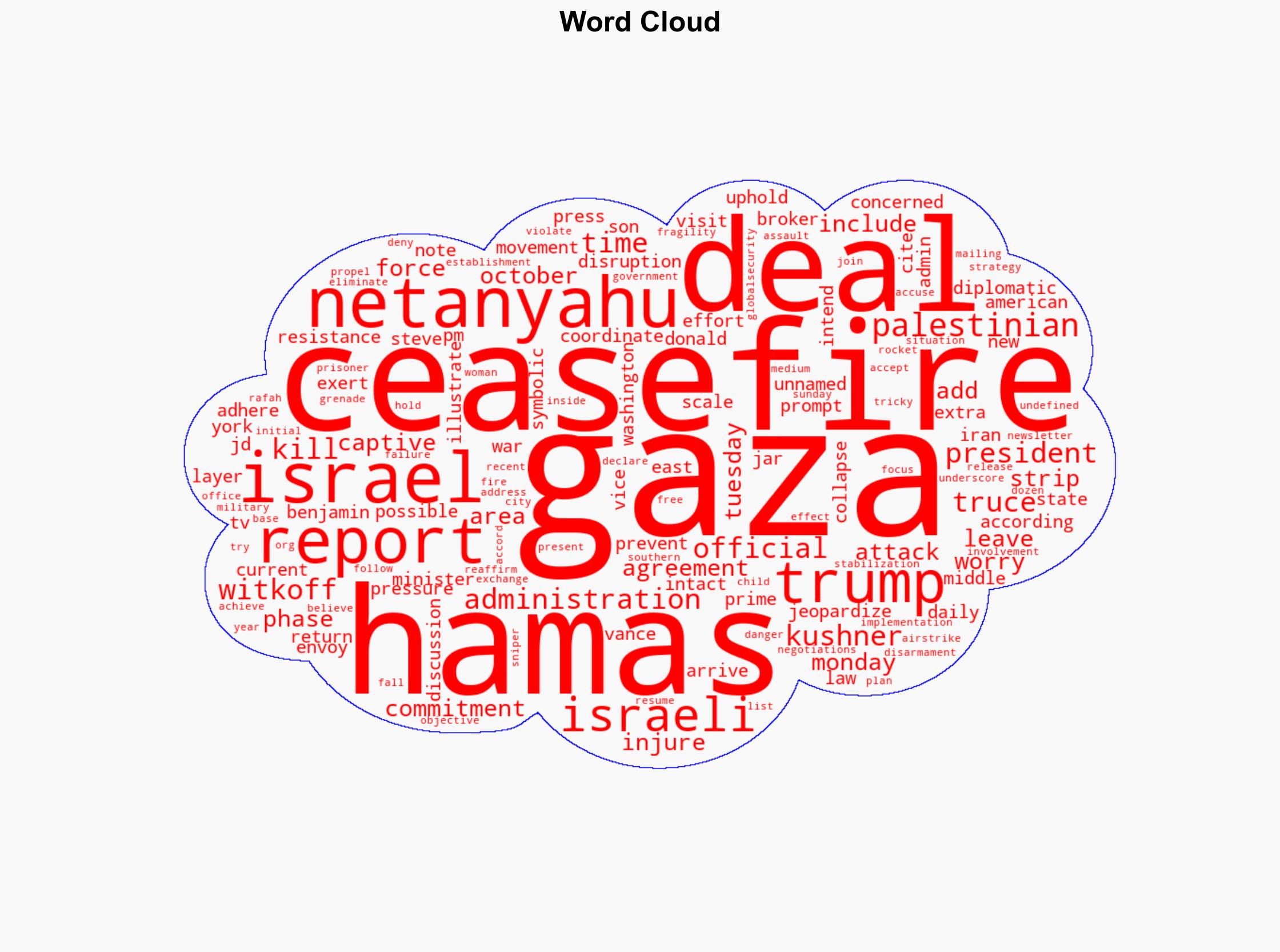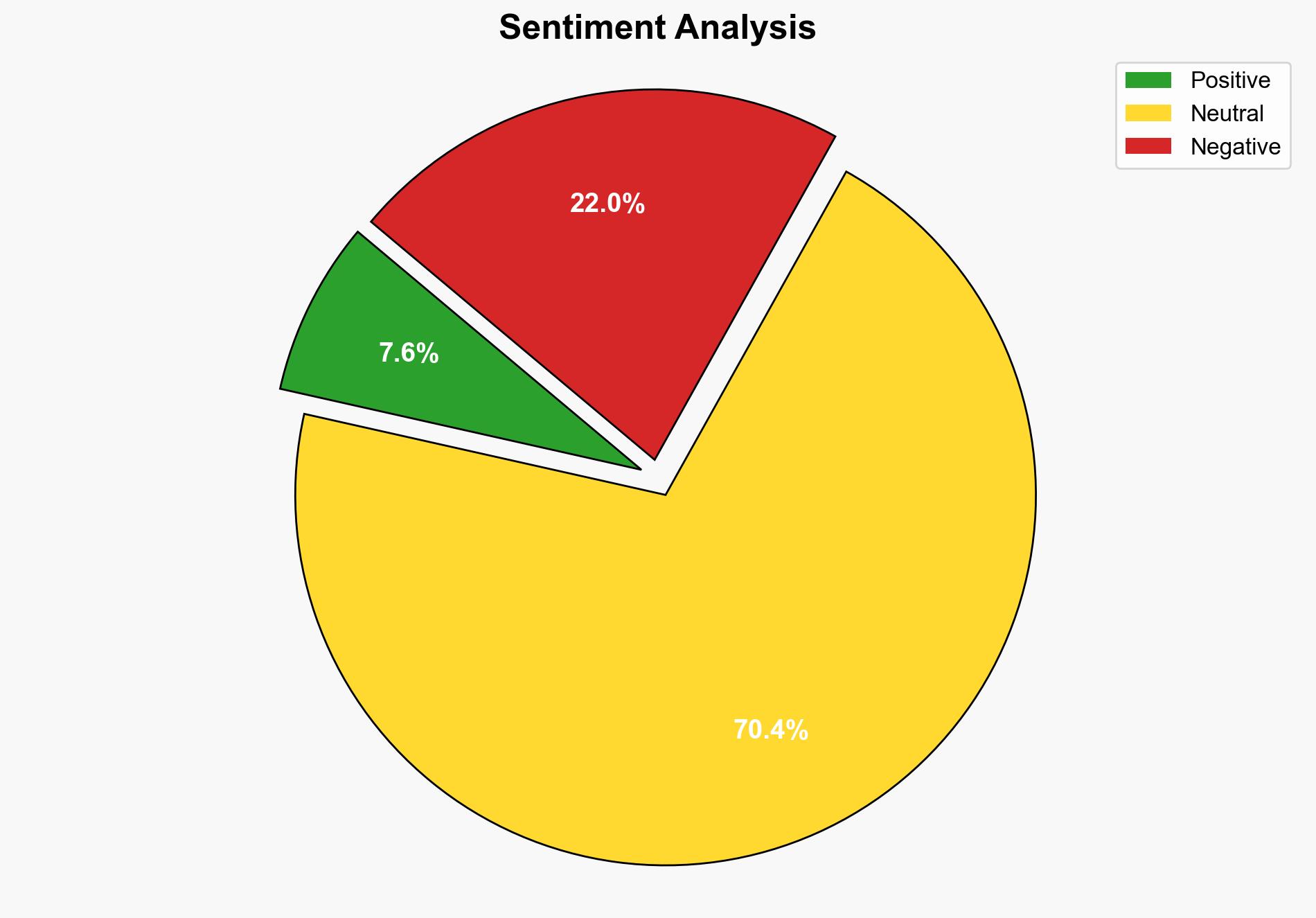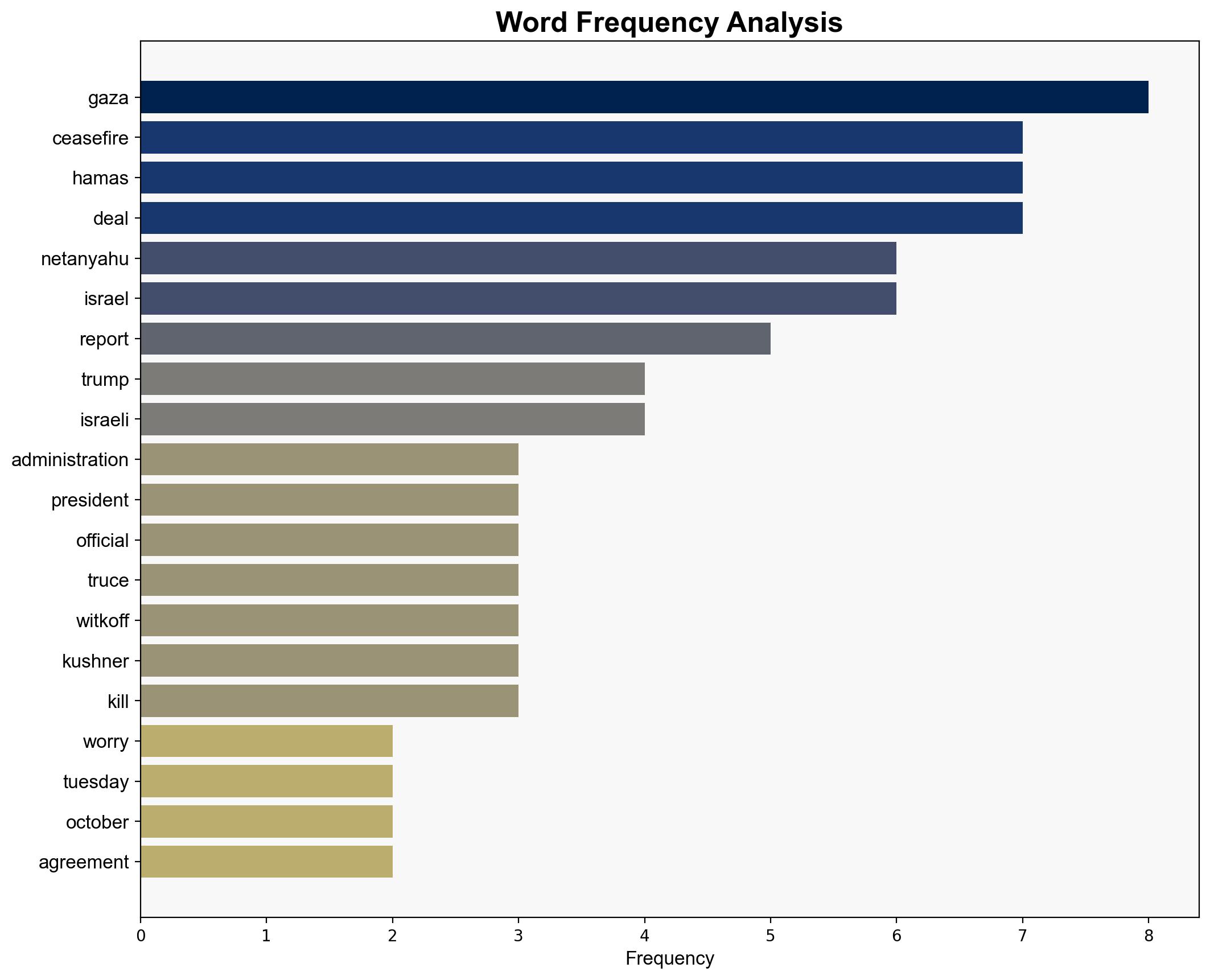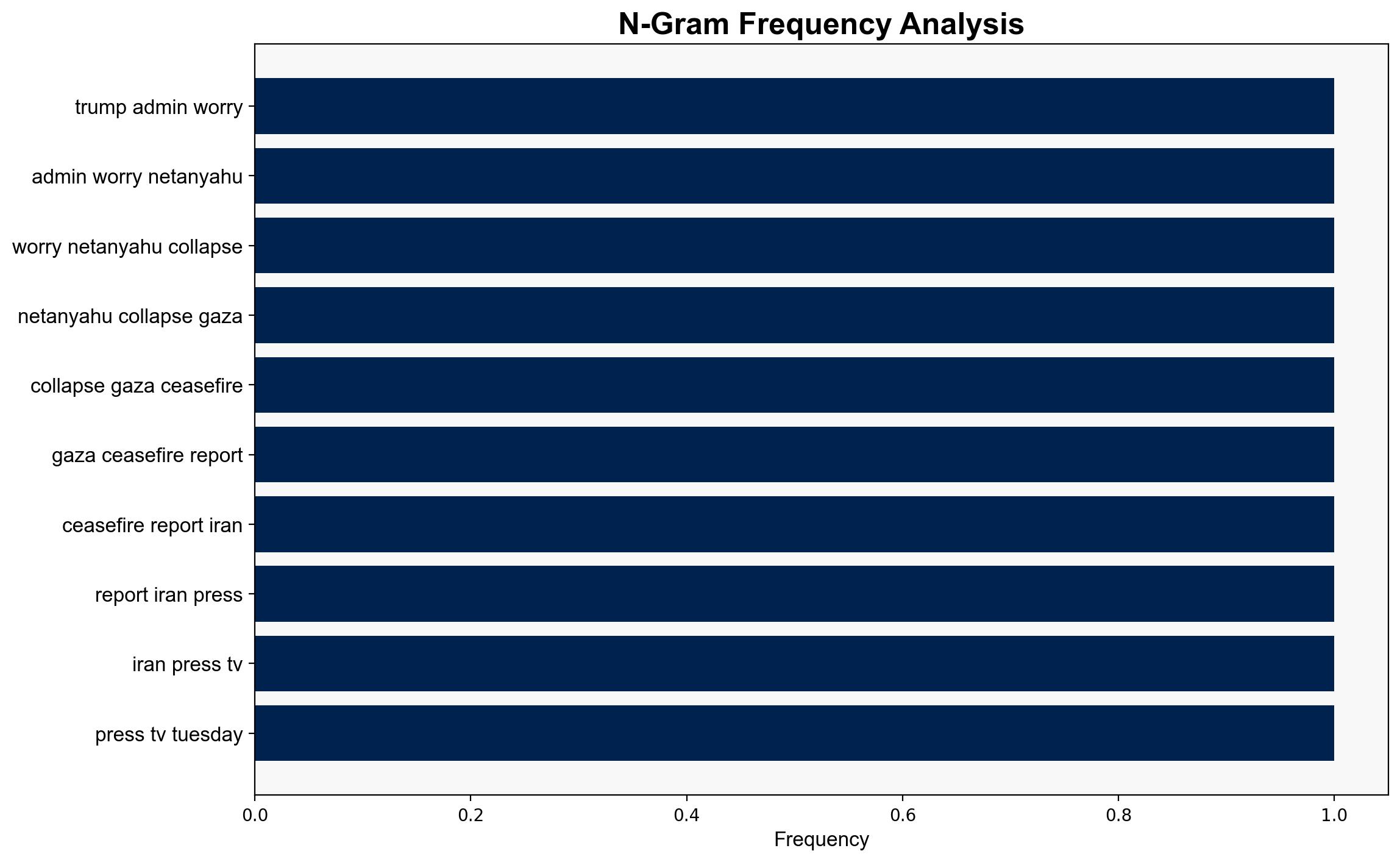Trump admin worried Netanyahu could collapse Gaza ceasefire Report – Globalsecurity.org
Published on: 2025-10-22
Intelligence Report: Trump admin worried Netanyahu could collapse Gaza ceasefire Report – Globalsecurity.org
1. BLUF (Bottom Line Up Front)
The most supported hypothesis is that the Trump administration is actively working to maintain the Gaza ceasefire due to concerns about regional stability and its broader Middle East policy objectives. This assessment is made with moderate confidence, given the complexity of regional dynamics and the involvement of multiple actors with conflicting interests. It is recommended that diplomatic efforts be intensified to ensure adherence to the ceasefire, while simultaneously preparing contingency plans for potential escalation.
2. Competing Hypotheses
1. **Hypothesis A**: The Trump administration is genuinely concerned that Benjamin Netanyahu might collapse the Gaza ceasefire due to internal political pressures or strategic interests, and is taking proactive measures to prevent this outcome.
2. **Hypothesis B**: The reported concerns are overstated or misrepresented, possibly as a strategic maneuver to pressure Netanyahu into compliance or to signal to other regional actors the U.S. commitment to the ceasefire.
Using Analysis of Competing Hypotheses (ACH), Hypothesis A is better supported by the presence of high-level diplomatic engagements and the reported involvement of key figures such as Jared Kushner and Steve Witkoff, indicating a genuine concern for maintaining the ceasefire.
3. Key Assumptions and Red Flags
– **Assumptions**: It is assumed that Netanyahu’s actions are primarily driven by domestic political considerations and that the Trump administration’s diplomatic efforts are sincere.
– **Red Flags**: The reliance on unnamed sources in the report raises questions about the veracity of the claims. Additionally, the potential bias of the source, Iran Press TV, should be considered.
– **Blind Spots**: The report does not address the perspectives or potential actions of other regional actors, such as Egypt or Qatar, who may influence the ceasefire’s stability.
4. Implications and Strategic Risks
– **Geopolitical Risks**: A collapse of the ceasefire could lead to renewed hostilities, destabilizing the region and complicating U.S. foreign policy objectives.
– **Economic Risks**: Escalation could disrupt regional trade and impact global markets, particularly in energy sectors.
– **Psychological Risks**: Prolonged conflict may exacerbate humanitarian crises, fueling anti-Israel and anti-U.S. sentiments.
5. Recommendations and Outlook
- Intensify diplomatic engagement with Israel and other regional stakeholders to reinforce the ceasefire.
- Develop contingency plans for potential escalation, including humanitarian aid and conflict resolution strategies.
- Scenario Projections:
- **Best Case**: Successful reinforcement of the ceasefire leads to long-term stability and opens avenues for broader peace negotiations.
- **Worst Case**: Collapse of the ceasefire results in widespread conflict, drawing in multiple regional actors and destabilizing the Middle East.
- **Most Likely**: Periodic violations occur, but diplomatic efforts manage to sustain a fragile peace.
6. Key Individuals and Entities
– Donald Trump
– Benjamin Netanyahu
– Jared Kushner
– Steve Witkoff
– JD Vance
7. Thematic Tags
national security threats, regional stability, Middle East policy, diplomatic strategy





